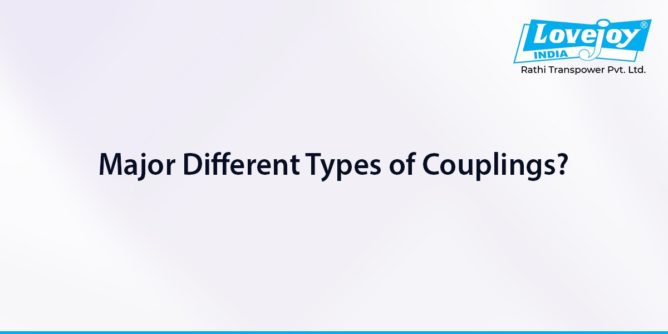
Types of Couplings fall into two fundamental classifications: Material Flexing Couplings and Mechanical Flexing Couplings. The material flexible types acquire their flexibility from extending or compacting a versatile material, for example, elastic, or from the flexing of flimsy metallic circles or framework.
Material flexing couplings don’t require lubrication, except for grid couplings.
The mechanical flexing couplings acknowledge misalignment from rocking, rolling or sliding of metal surfaces. All metal mechanical flexing couplings require lubrication.
What are Material Flexing Couplings?
Material flexing couplings normally don’t require grease and work in shear or pressure and can acknowledge angular, parallel and axial misalignment.
Instances of material flexing couplings are jaw, sleeve, tyre, disc, grid and diaphragm couplings. Here are the types of couplings.
Jaw Couplings:
The jaw couplings are types of couplings that transmit torque through the pressure of an elastomeric insect addition put between two intermeshing jaws.
•Flex component is ordinarily made of NBR, polyurethane, Hytrel or Bronze
•Accommodates misalignment
•Transmits torque
•Used for torsional hosing (vibration)
•Low torque, broadly useful applications
Read More: Flexible Couplings
Sleeve Couplings:
The sleeve couplings are types of couplings that transmit low to medium torque between associated hardware in shear through an elastomeric embed with male splines that mate with female hub splines.
The supplement material is ordinarily EPDM, Neoprene or Hytrel and the addition can be a couple of piece design.
•Moderate misalignment
•Torsional hosing (vibration)
•End drift with slight hub freedom
•Low to medium torque, universally useful applications
Tyre Couplings:
These couplings have an elastic or polyurethane component associated with two hubs. The elastic component transmits torque in shear.
•Reduces transmission of stun burdens or vibration
•High misalignment limit
•Easy get together w/o moving hubs or associated hardware
•Moderate to high-speed operation and running
•Wide range of torque limit
Disc Couplings:
The disc coupling’s guideline of activity has the torque transmitted through flexing disc elements.
It works through tension and compression of chorded segments on a typical bolt circle shot on the other hand between the drive and driven side.
These couplings are normally contained two hubs, two discs packs, and a centre member.
A single-disc pack can suit precise and axial misalignment. Two-disc packs are expected to suit parallel misalignment.
•Allows angular parallel and hub misalignment
•Is a genuine restricted end float design
•A zero backlash design
•High-speed rating and balance
Diaphragm Couplings:
Diaphragm couplings use a single or a progression of plates or diaphragms for the flexible members.
It transmits torque from the outside diameter of an adaptable plate to within diameter, over the spool or spacer piece, and after that from inside to outside diameter.
The deflection of the external distance across with respect to the inner diameter is the thing that happens when the diaphragm is subject to misalignment.
For instance, axial displacement attempts extend the diaphragm which results in a blend of elongations and bending of the diaphragm profile.
• Allows angular, parallel and high axial misalignments
• Used in high torque, high-speed applications
Read More: Applications of Spacer Couplings
Gear Couplings:
Gear couplings transmit the highest amount of torque and the highest amount of torque in the smallest diameter of any flexible coupling.
Each coupling consists of two hubs with crowned external gear teeth. The hubs mesh with two internally splined flanged sleeves that are bolted together.
Gear couplings accommodate angular and axial misalignment by the rocking and sliding of the crowned gear teeth against the mating sleeve teeth.
Parallel misalignment is accommodated by having two adjacent hub/sleeve flex points. Gear couplings require periodic lubrication depending on the application.
They are sensitive to lubrication failures but if properly installed and maintained, these couplings have a service life of 3 to 5 years and in some cases, they can last for decades.
What are Mechanical Flexing Couplings?
The mechanical flexing couplings accept misalignment from shaking, rolling or sliding of metal surfaces.
All metal mechanical flexing couplings require lubrication. Some of the examples of mechanical flexing couplings are grid, gear and roller chain couplings.
Rathi Couplings is a pan-India operation delivering high-end technologically advanced coupling manufacturers with best in class products.
Reach out to us for all your industrial and manufacturing needs with affordable yet high-quality products.
